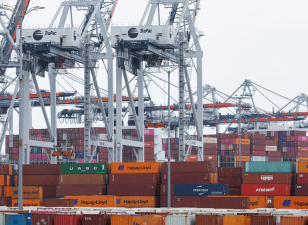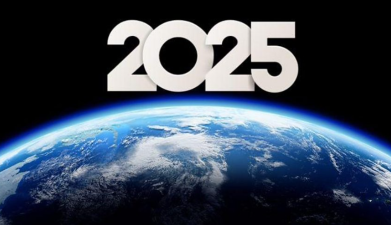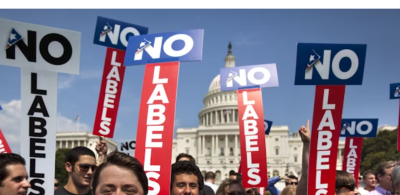For companies operating globally, changes in the international trade system are becoming a management factor that cannot be ignored. The stagnation of the WTO's operations, the development of regional trade agreements, changes in the economic security situation, and the tariff war provoked by the United States are bringing major changes to the traditional rule-based trade environment.
For companies operating globally, changes in the international trade system are becoming a management factor that cannot be ignored. The stagnation of the WTO's operations, the development of regional trade agreements, changes in the economic security situation, and the tariff war provoked by the United States are bringing major changes to the traditional rule-based trade environment.

The current status of global trade rules and structures
The current status of the multilateral trading system with the WTO as the core
Since its establishment in 1995, the World Trade Organization (WTO) has been composed of 164 member countries and regions and is committed to promoting the liberalization and stabilization of international trade. The main principles of the WTO help ensure non-discrimination, transparency and predictability, and contribute to the smooth conduct of international trade, including:
- Most Favored Nation (MFN)
The country is obliged to unconditionally provide to all member countries any trade benefits or privileges it grants to other member countries.
- National treatment:
Imported products must enjoy equal treatment with similar products in the domestic market, and discriminatory treatment is prohibited.
- Binding tariffs
Member countries set upper limits on tariff rates to promote a predictable and stable trading environment.
The rise of regional trade agreements (RTAs) and free trade agreements (FTAs)
The multilateral negotiations of the WTO, especially the Doha Development Agenda (DDA) launched in 2001, aimed at reducing agricultural subsidies, improving market access, and supporting developing countries, have stalled due to differences of opinion between developed and emerging countries, resulting in a decline in the initiative to formulate new trade rules. For this reason, countries have withdrawn from the WTO and actively sought to conclude regional trade agreements (RTAs) and free trade agreements (FTAs) in order to flexibly formulate high-standard rules in areas such as tariff elimination, investment, e-commerce, and intellectual property protection. The most prominent agreements are:
- Comprehensive and Progressive Agreement for Trans-Pacific Partnership (CPTPP)
Originally conceived as the Trans-Pacific Partnership (TPP) led by the United States, it was reorganized with Japan as the center and took effect in 2018 after the United States withdrew in 2017. The agreement currently has 11 countries participating, including Japan, Canada, Mexico, Australia, and Vietnam, and has not only gradually eliminated tariffs, but also achieved a high degree of liberalization in a wide range of areas such as intellectual property protection, state-owned enterprise discipline, and e-commerce rule-making.
- Regional Comprehensive Economic Partnership (RCEP)
Signed in 2020 and set to take effect in 2022, RCEP (Regional Comprehensive Economic Partnership) is the world's largest free trade agreement, involving 10 ASEAN countries as well as Japan, China, South Korea, Australia and New Zealand. The total population, GDP and trade volume of member countries account for about 30% of the world's total population, and are expected to promote economic integration, especially in the Asia-Pacific region. In addition to the elimination of tariffs, it has also significantly promoted the unification of rules of origin and the liberalization of trade in services and investment.

US tariff policy and its impact on global trade
In 2025, the Trump administration of the United States introduced a "reciprocal tariff" policy, imposing high tariffs on a wide range of countries and regions to reduce trade deficits and revitalize domestic manufacturing. For example, a 24% tariff was imposed on Japan and a 145% tariff was imposed on China. This impact is not only reflected in individual countries, but also in the world:
- Undermining WTO rules
The US tariff policy may violate the WTO's principle of most-favored-nation treatment and the principle of tariff binding, and undermine the normal operation of the WTO dispute settlement mechanism. In particular, the WTO's dispute settlement function has been suspended due to the United States' opposition to the addition of members to the Appellate Body.
- Chain retaliatory tariffs and the shift to regional trade agreements
In response to the United States' unilateral tariff measures, major countries, the European Union, Canada and other countries have announced retaliatory tariffs. This situation is reminiscent of the trade war since the Smoot-Hawley Tariff Act of 1930, and has led to the logic of power over negotiations based on WTO rules. As a result, the framework for resolving trade disputes has been weakened, and countries are increasingly seeking to justify their protectionist policies.
- Global value chain (GVC) restructuring and US economic isolation
The United States' high tariffs have a significant impact on Japan's exports of automobiles, electronic equipment, etc. In particular, the Japanese automobile industry is highly dependent on exports to the United States, and the increased costs caused by tariffs have put pressure on profits. Although local production will expand and alternative markets (major countries, Southeast Asia) will accelerate, supply chain disruptions are expected in the short term.
- Impact of shifting to emerging countries and rising prices
US protectionism is encouraging trade to shift to major countries, India and Southeast Asia. Through RCEP and the Belt and Road Initiative, major countries may be able to strengthen their position as global trade hubs, but there are concerns that their economies may slow down due to the impact of the COVID-19 pandemic and the trade war with the United States. In addition, tariffs have led to increased import costs, resulting in higher prices for electronic equipment, food, clothing and other goods in various countries, increasing global inflationary pressures. American consumers in particular feel the increased burden of daily life, and the impact on farmers and dock workers is particularly obvious.
Seeking a long-term perspective and a new trade order
The US tariff war has provided an excuse for other countries to pursue protectionism and accelerated the fragmentation of global trade. If all countries strengthen their own priority policies, the efficiency of the global value chain may decline, and the overall growth of the global economy will stagnate.
As the WTO continues to fail, countries are seeking to establish a new trade order. For example, the EU and Japan are strengthening cooperation to maintain a rules-based trading system. In addition, regional trade agreements such as RCEP and CPTPP have received attention in the Asia-Pacific region, and efforts to promote trade liberalization and economic integration through these frameworks are accelerating.
In addition, at the corporate level, there is a growing trend to diversify supply chains and spread risks. Reducing dependence on specific countries or regions and establishing a more flexible and sustainable supply system are becoming important strategies for the future development of global companies.













